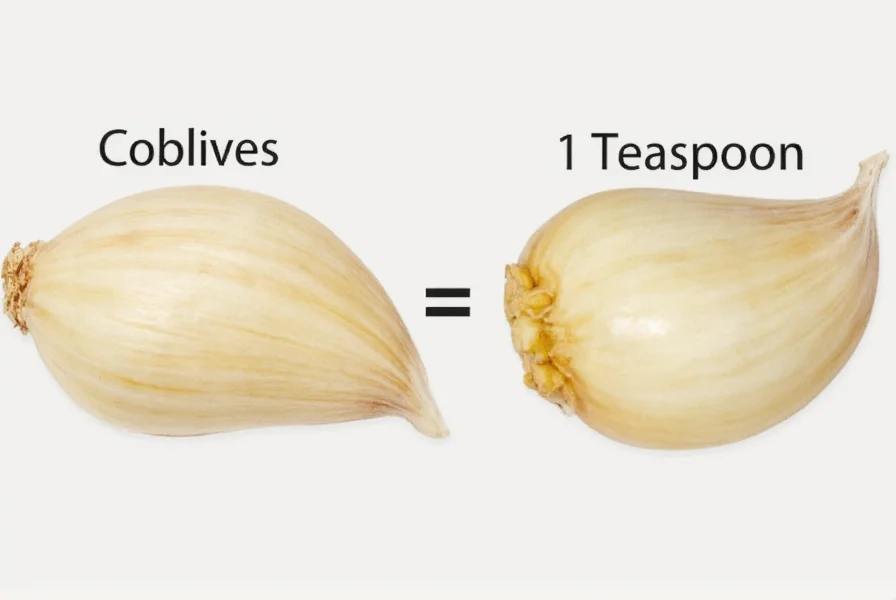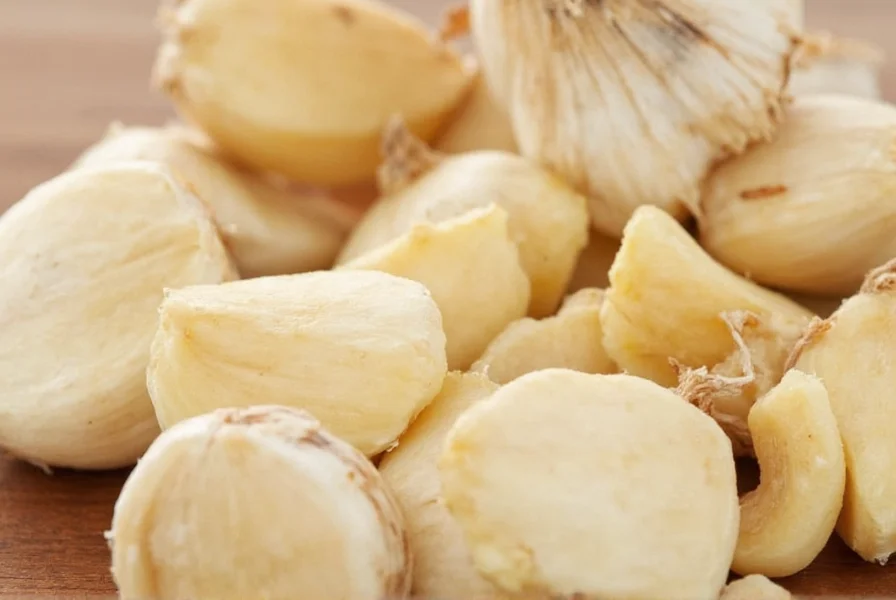Two medium-sized garlic cloves equal approximately 1 teaspoon of minced garlic. This conversion is essential for precise cooking and recipe execution, as garlic measurements directly impact flavor balance in dishes.
Understanding garlic measurements is crucial for home cooks and professional chefs alike. When recipes call for specific numbers of cloves but you're working with pre-minced garlic or need to adjust quantities, knowing the exact conversion prevents flavor imbalances. The standard conversion for garlic cloves to teaspoons depends primarily on clove size and preparation method.
Garlic Clove Size Variations and Their Measurements
Garlic cloves come in three primary sizes, each yielding different teaspoon measurements when minced:
| Garlic Clove Size | Minced Measurement | Crushed Measurement |
|---|---|---|
| Small (½" diameter) | ½ teaspoon | ¾ teaspoon |
| Medium (¾" diameter) | 1 teaspoon | 1½ teaspoons |
| Large (1"+ diameter) | 1½ teaspoons | 2 teaspoons |
For the specific query how many teaspoons is 2 cloves of garlic, two medium cloves yield approximately 1 teaspoon when finely minced. However, if using larger cloves, the same quantity could produce up to 1½ teaspoons of minced garlic.
Factors Affecting Garlic Measurement Accuracy
Several variables influence the precise conversion from whole cloves to teaspoon measurements:
- Preparation technique - Finely minced garlic packs more densely than roughly chopped
- Moisture content - Freshly harvested garlic contains more moisture than stored bulbs
- Packing method - How tightly you press minced garlic into the measuring spoon
- Cultivar differences - Some garlic varieties have larger or smaller cloves by nature

Practical Kitchen Conversion Tips
When converting 2 cloves of garlic to teaspoons in real cooking situations, consider these professional techniques:
- For most standard recipes, assume medium cloves unless specified otherwise
- When precision matters (like in delicate sauces), actually mince your cloves and measure
- Remember that roasted garlic yields less volume than raw due to moisture loss
- Adjust measurements based on garlic's pungency - some varieties are stronger than others
Garlic Measurement Substitutions
If you're working without fresh garlic, these substitutions maintain flavor balance:
- 1 teaspoon minced garlic = ½ teaspoon garlic powder
- 1 teaspoon minced garlic = ¾ teaspoon garlic flakes
- 1 teaspoon minced garlic = 1 garlic paste packet (commercial)
When substituting for how much minced garlic equals 2 cloves, remember that dried garlic products have concentrated flavor. Start with less than you think you need, then adjust to taste.

Professional Chef Insights on Garlic Measurements
Experienced chefs emphasize that garlic measurement isn't purely mathematical. The garlic clove to teaspoon conversion must account for:
- Recipe context - A pasta sauce can handle more garlic than a subtle cream sauce
- Personal preference - Some palates detect garlic more strongly than others
- Garlic age - Older bulbs develop stronger flavor compounds over time
- Cooking method - Raw applications require less volume than cooked dishes
For Mediterranean or Asian cuisines where garlic features prominently, many chefs recommend using 25-50% more than standard conversions suggest. In French or delicate European preparations, they often use slightly less.
Common Measurement Mistakes to Avoid
Many home cooks make these errors when converting how many teaspoons is two garlic cloves:
- Assuming all cloves are the same size (they vary significantly within a single bulb)
- Measuring before mincing (always measure after preparation)
- Using heaping teaspoons without leveling (creates inconsistent results)
- Not accounting for garlic's natural moisture content variations
For consistent results in baking and precise recipe development, professional kitchens often weigh garlic instead of using volume measurements. One medium clove weighs approximately 3-7 grams, depending on variety and moisture content.
Creating Your Own Garlic Conversion Reference
Develop a personalized conversion chart by:
- Measuring your typical garlic cloves over several purchases
- Noting the brand or source (farmers market vs. supermarket)
- Recording measurements for different preparation methods
- Adjusting future recipes based on your specific garlic's potency
This personalized approach to garlic measurement equivalents yields more consistent results than relying solely on standard conversion charts.
Frequently Asked Questions
How many teaspoons is 2 cloves of garlic when crushed instead of minced?
When crushed rather than minced, two medium garlic cloves yield approximately 1½ teaspoons. Crushing releases more moisture and causes the garlic to expand slightly compared to finely minced garlic, which packs more densely into a measuring spoon.
Does the age of garlic affect the teaspoon conversion for 2 cloves?
Yes, older garlic typically yields slightly less volume when measured in teaspoons. As garlic ages, it loses moisture content, so two older cloves might produce only ¾ teaspoon of minced garlic compared to 1 teaspoon from fresh cloves. The flavor intensity often increases as garlic ages, so you may need less by volume.
Can I use garlic powder instead of fresh cloves in a 1:1 ratio?
No, garlic powder requires a different conversion ratio. For how much minced garlic equals 2 cloves, you would use only ½ teaspoon of garlic powder. Garlic powder is more concentrated, so the general rule is 1:3 ratio (1 part powder to 3 parts fresh minced garlic). Start with less and adjust to taste, as powder can become bitter if overused.
Why do some recipes specify garlic clove count while others use teaspoon measurements?
Traditional recipes often specify clove counts because they were developed when fresh garlic was the only option. Modern recipes frequently use teaspoon measurements for precision, especially in baking and professional cooking. The shift reflects greater understanding of how garlic size variations affect final dish flavor. When converting between formats, always consider your specific garlic's size and potency.
How can I accurately measure garlic when I don't have measuring spoons?
Without measuring spoons, use these practical methods: the tip of your index finger equals approximately 1 teaspoon; a standard bottle cap holds about 2 teaspoons; or use a standard eating utensil where the bowl of a teaspoon holds roughly 5ml (1 teaspoon). For 2 cloves of garlic to teaspoons conversion, remember that two medium cloves should fill the palm of your hand to the first knuckle when minced.










 浙公网安备
33010002000092号
浙公网安备
33010002000092号 浙B2-20120091-4
浙B2-20120091-4